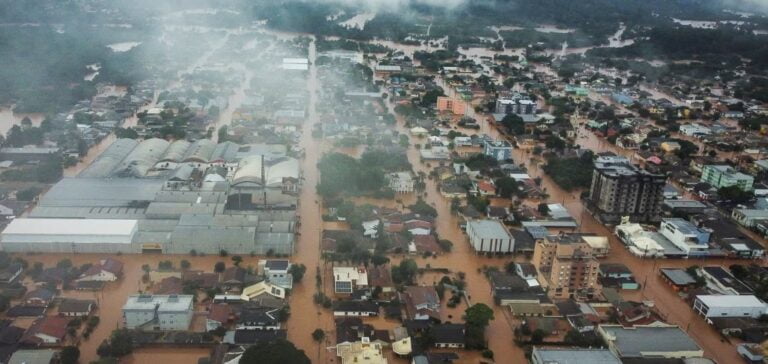Flooding in Brazil has claimed at least 78 lives and forced 80,000 people from their homes, while the level of the Guaiba River has broken previous records, reaching 5.30 meters. In Porto Alegre, the floods have completely isolated the city, with the main bus station and airport closed. Entire houses were submerged, visible only from the tops of their roofs.
Official responses and government assistance
Governor Eduardo Leite and President Lula were quick to respond, calling for a “Marshall Plan” to help rebuild. The governor described the situation as “dramatic and unprecedented”, with civil defense confirming 66 dead and 101 missing in Porto Alegre. Brazilian President Lula visited the region, promising to speed up federal aid for reconstruction and disaster relief.
Community solidarity and international appeals
In response to the gravity of the situation, solidarity actions are emerging. Pope Francis offered prayers for the victims from the Vatican, evoking hope and spiritual support. Volunteers such as Eduardo Bittencourt are mobilizing to help evacuate trapped people, while donations are being sought on an international scale to support relief and reconstruction efforts.
Long-term impact and economic outlook
The economic consequences are considerable, with key infrastructure destroyed and major disruptions to food and water supplies. More than a million homes are without water, and Porto Alegre’s isolation threatens agricultural production, essential to the state’s economy. Authorities are warning of impending shortages that could affect the rest of the country.
Climatic factors and preventive measures
Climate experts attribute the severity of flooding to El Niño combined with climate change, which is increasing the frequency and intensity of extreme weather events. They recommend investment in infrastructure to better withstand future natural disasters. Weather forecasts suggest that the rains could continue, increasing the risk of landslides.
The tragedy in Rio Grande do Sul highlights the need for coordinated global action to rebuild and prepare for future climate challenges. This disaster reveals the urgent need to rethink infrastructures and prevention strategies to protect vulnerable communities.






















